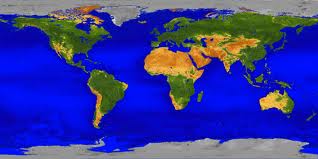
HOMEPAGE


Global Climate Models (GCMs) are numerical models representing physical processes in the atmosphere, ocean, cryosphere and land surface and their interactions. GCMs are the most advanced tools currently available for investigating the response of the climate system to various forcings, for making climate predictions on seasonal to decadal time scales and for making projections of future climate over the coming century and beyond and have been demonstrated to reproduce observed features of recent and past climate changes (IPCC, 2013).
Currently, there are 3 main categories of GCMs: the coupled Atmosphere-Ocean General Circulation Models (AOGCMs), the Earth System Models (ESMs) and the Earth System Models of Intermediate Complexity (EMICs).
The primary function of AOGCMs is to understand the dynamics of the physical components of the climate system (atmosphere, ocean, land and sea ice), and to make projections based on future greenhouse gas (GHG) and aerosol forcing.
ESMs are the current state-of-the-art models, and they expand on AOGCMs to include representation of various biogeochemical cycles such as those involved in the carbon cycle, the sulphur cycle, or ozone (Flato, 2011). These models provide the most comprehensive tools available for simulating past and future response of the climate system to external forcing, in which biogeochemical feedbacks play an important role (IPCC, 2013).
Finally, EMICs are designed to answer certain scientific questions such as understanding climate feedbacks on millennial time scales or exploring sensitivities in which long model integrations or large ensembles are required (Claussen et al., 2002; Petoukhov et al., 2005). Therefore, although they attempt to include components of the ESMs, it is often in an idealized manner or at lower resolution than ESMs to save computational power.
GCMs depict the climate using a three dimensional grid over the globe, typically having a horizontal resolution of between 100 and 600 km, 20 to 40 vertical layers in the atmosphere and sometimes as many as 30 layers in the oceans. Their resolution is thus quite coarse relative to the scale that many physical processes take place (e.g., cloud formation) and thus cannot be properly modelled. Instead, their known properties must be averaged over the larger scale in a technique known as parameterization. Moreover many processes are poorly represented, constrained and/or understood. For these reasons, GCMs may simulate quite different responses to the same forcing, simply because of the way certain processes and feedbacks are modelled.
References
Claussen, M., et al., 2002: Earth system models of intermediate complexity: Closing the gap in the spectrum of climate system models. Clim. Dyn., 18, 579-586.
Flato, G., 2011: Earth system models: an overview. Wiley Interdisciplinary Reviews, Climate Change, 2, 783-800.
IPCC, 2013: Climate Change 2013: The Physical Science Basis. Contribution of Working Group I to the Fifth Assessment Report of the Intergovernmental Panel on Climate Change [Stocker, T.F., D. Qin, G.-K. Plattner, M. Tignor, S.K. Allen, J. Boschung, A. Nauels, Y. Xia, V. Bex and P.M. Midgley (eds.)]. Cambridge University Press, Cambridge, United Kingdom and New York, NY, USA, 1535pp.
Petoukhov, V., et al., 2005: EMIC Intercomparison Project (EMIP-CO2): Comparative analysis of EMIC simulations of climate, and of equilibrium and transient responses to atmospheric CO2 doubling. Clim. Dyn., 25, 363-385.